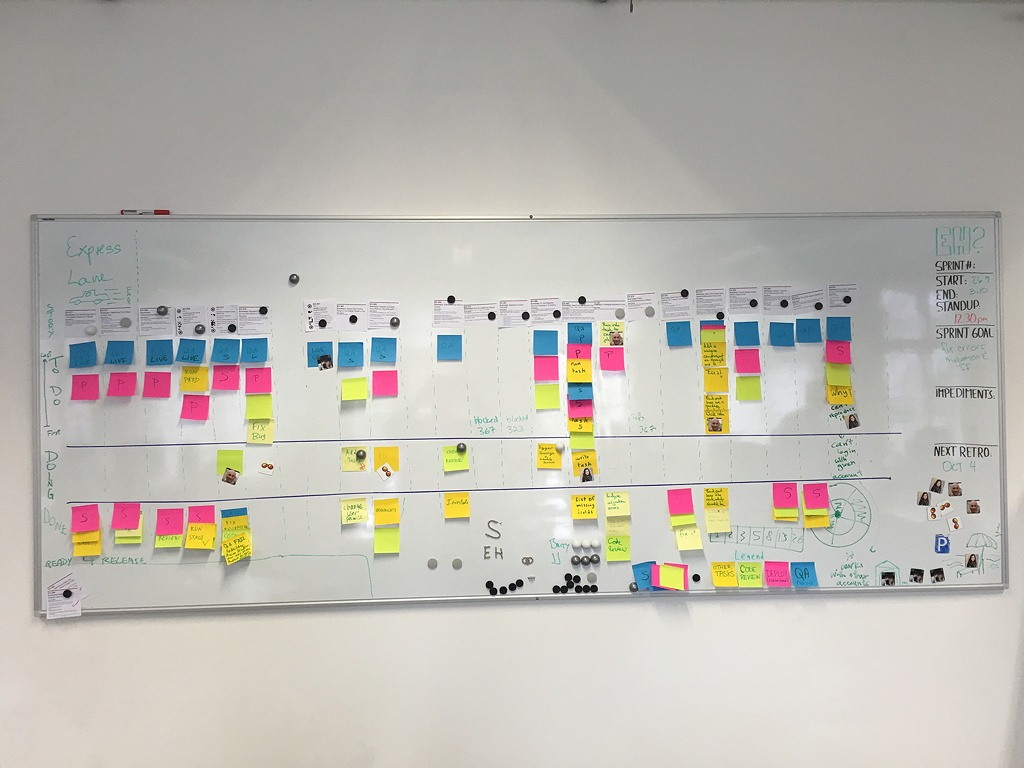Age of Product’s Food for Thought of October 2nd, 2016—shared with 4,804 peers—deals with fake agile, façade agile, agile idiots, and cargo cult in the cradle of disruption: Silicon Valley.
We then have fun with a “Scrum master” job posting, get access to notes from the original Agile Manifesto meeting, and are sold on the idea that team building is not just everybody’s concern, but actually can be fun and productive at the same time.
We also understand how to build awesome offline boards and the science behind making apps addictive. Finally, we can fill all the idle time in our lives with content from 50 must-read product management blogs.
Last, but not least, we learn about the endless bombardment of news and gossip, and images that have rendered us manic information addicts.
Enjoy a great Sunday!
Essential Read
(via New York Magazine): My Distraction Sickness — and Yours
Andrew Sullivan on: “An endless bombardment of news and gossip and images has rendered us manic information addicts. It broke me. It might break you, too.”
Fake Agile & Scrum
(via ThoughtWorks): The Future of Agile: Innovators, Imitators, and Idiots
Jim Highsmith borrows from Warren Buffet, who commented on the natural progression of how good ideas go wrong, to describe the future of agility: “Innovators, Imitators, and Idiots”.
(via TechBeacon): How to shed your agile camouflage: 5 ways to tell if your team is agile in name only
Stephen Frein highlights five examples of teams covering themselves in agile camouflage: Borrowing the ceremonies and lexicon of agile methods without fundamentally changing their underlying work habits.
: Learnings from Coaching Agile Teams
Simon Powers describes his journey as an agile coach, having reached chapter 13 of “Coaching Agile Teams” by Lyssa Adkins, and realizes how vastly “good agile” differs from “façade agile”.
(via Growing Agile): The big Scrum Master misunderstanding
Samantha Laing analyzes in detail a less convincing job posting for a Scrum master position, and provides an example of a good one, too. (Check out the latter, if you are currently looking to change your position.)
(via Agile Uprising): Original Manifesto Meeting Notes [Open]
The Agile Uprising community shares the original Agile Manifesto meeting notes of Jon Kern as part of their manifesto review project. Note: Please join the community and contribute.
(via GOTO Conferences): Building a High-Performance Team is Everyone's Job
Camille Fournier shares in this video her conviction that building great teams isn't just something that managers do alone. Great teams come from the participation of the group to push the team there.
(via Process Street): 63 Team Building Activities That Your Team Won’t Roll Their Eyes At
Benjamin Brandall explains convincingly that team building does not have to be an afternoon of time-wasting — just reaffirming everyone’s discomfort — by providing a list of 63 exercises that actually work.
From the Blog: How to Build Offline Boards
Offline boards lift a team’s level of collaboration significantly. They are great information radiators for stakeholders, and they massively benefit from the psychology of getting haptic. Learn the best practices of getting started with your own offline boards in this third post of our series on how to kick-off an agile transition.

Read more: How to Build Offline Boards – Agile Transition (Part 3)
Product & Lean
(via 1843 magazine): The scientists who make apps addictive

Ian Leslie reports from Silicon Valley, where the most successful tech companies use the insights of behaviour design to pump us with dopamine and keep us returning to their products. And some of the psychologists who developed the science of persuasion are worried about the way it is being used.
(via svpg): Behind Every Great Product
Marty Cagan revisits his first essay for SVPG — “Behind Every Great Product” – after ten years, and provides great examples where the product manager could actually do her job.
and (via Intercom): Q&A: How should product managers prioritize their time?
Brian Donohue and Colin Bentley share their ideas and learnings on how to deal with the not-enough-time dilemma many product managers face: From how to plan daily goals, to where a product manager’s responsibilities begin and end.
(via Roadmunk Blog): 50 product management blogs you should be reading
The guys at Roadmunk compiled an epic list of product management blogs: From the classics, to educators, influencers, and the best of Medium. Congrats to John Cutler for making it onto the list!
: Startup Cargo Cults: What They Are and How to Avoid Them
Leo Polovets analyzes the startup ecosystem, the proverbial cradle of innovation and disruption, for signs of Cargo Cult thinking: Causes, examples, and warning signs. He also includes tips how to handle outbreaks.

